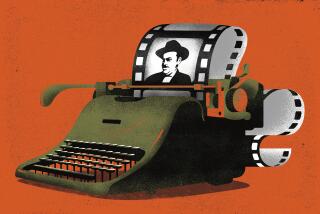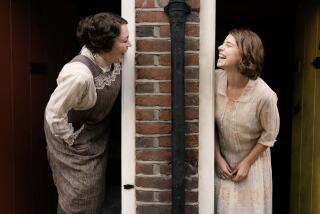‘The Wonderful Wizard of Oz’ gets an edgy new look
As a kid, I watched “The Wizard of Oz” when it was broadcast annually, but the story always struck me as out-of-date. It felt as if the stakes were not high enough, as if, for all of Margaret Hamilton’s spirited caterwauling as the Wicked Witch of the West, the fate of Dorothy and her compatriots — the Scarecrow, the Tin Woodman and the Cowardly Lion — was never fundamentally in doubt.
Yet this may have been exactly what Oz’s creator, L. Frank Baum, had in mind.
In his introduction to “The Wonderful Wizard of Oz,” published in 1900, Baum writes: “[T]he time has come for a series of newer ‘wonder tales’ in which the stereotyped genie, dwarf and fairy are eliminated, together with all the horrible and blood-curdling incidents devised by their authors to point a fearsome moral to each tale. … ‘The Wonderful Wizard of Oz’ … aspires to being a modernized fairy tale, in which the wonderment and joy are retained and the heartaches and nightmares are left out.”
It’s easy to underestimate Baum’s book when we think about the Wizard, so iconic is the 1939 film. And yet it remains a taut little novel, a pretty terrific tale for kids. I read it recently — for the first time, I’ll admit — in a new edition (HarperDesign: 224 pp., $18.99) timed to coincide with the release of Sam Raimi’s “Oz the Great and Powerful.”
If the Raimi movie has little purpose other that to dazzle us with visuals (the last resort of a filmmaker with nothing to say), “The Wonderful Wizard of Oz” is visually dazzling for a different reason: Featuring new illustrations by Michael Sieben, a writer and illustrator for Thrasher magazine, it’s an attempt to rethink the “Wizard” — or, more accurately, to provoke us into seeing it anew.
At first glance, this might seem a matter of cognitive dissonance: Baum’s characters, with roots in the rural Midwest of 100 years ago, reframed by an artist for a skateboard mag. Yet in the end, it illuminates the lushness, the potential, of Baum’s universe.
Sieben’s art is edgy, primitive, a little bit Lynda Barry, a little bit Kaz. It’s jarring when we first encounter it, but that just helps unravel our preconceptions, making us re-imagine what we thought we knew.
Baum, of course, understood the value of a stirring image; he shared the copyright to “The Wonderful Wizard of Oz” with its original illustrator, W.W. Denslow.
In a contemporaneous review, Denslow’s art is singled out: “Indeed the illustrations are quite as much of the story as is the writing … and as for Dorothy herself and Toto and the scarecrow and the cowardly lion and the tin woodman one would never know exactly what they were like without Mr. Denslow’s aid.”
Sieben’s reboot performs a similar function, reinvigorating “The Wonderful Wizard of Oz” by recasting it so we can meet it fresh.
The result is a new Oz, related to but not the same as the one we’ve seen before.
ALSO:
Mark Twain‘s ‘Advice to Little Girls’
Love Beezus and Ramona? Beverly Cleary’s childhood home is for ...
James Vance and Dan E. Burr’s new graphic novel goes to the circus
More to Read
Sign up for our Book Club newsletter
Get the latest news, events and more from the Los Angeles Times Book Club, and help us get L.A. reading and talking.
You may occasionally receive promotional content from the Los Angeles Times.







